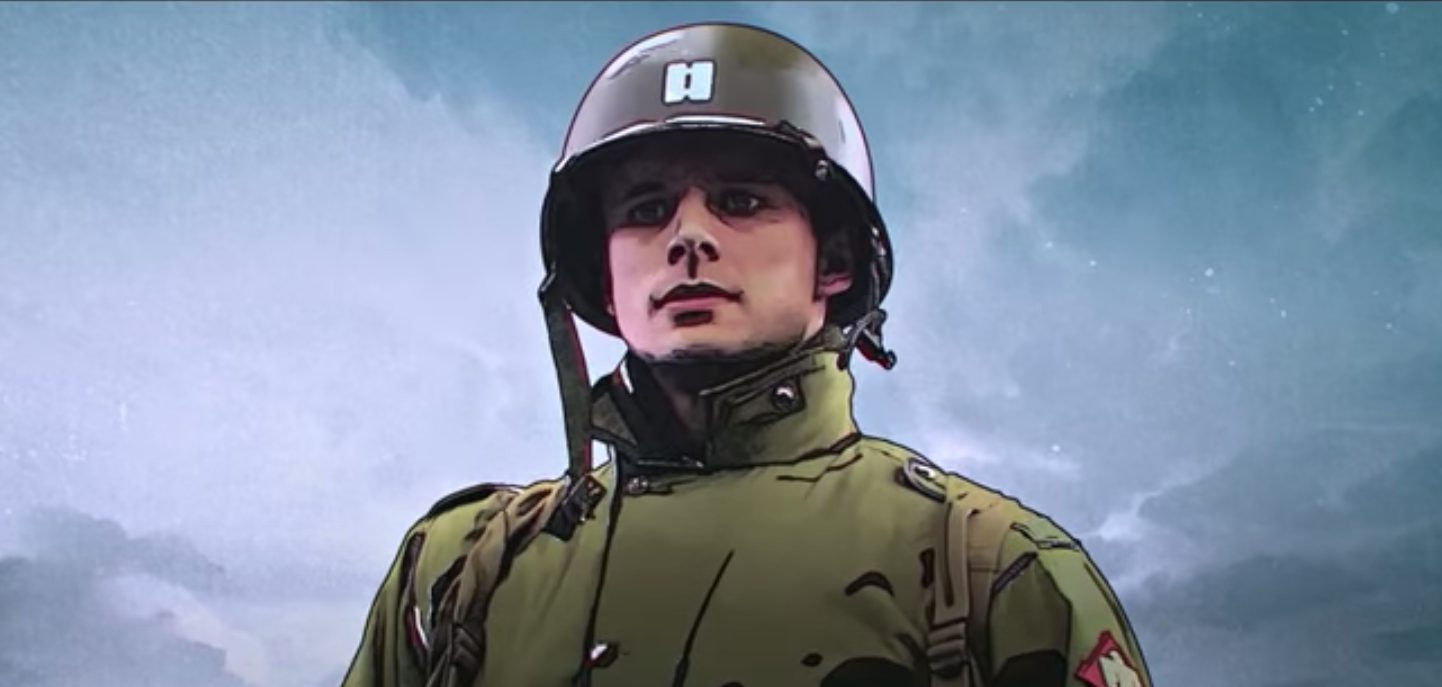Created by Jeb Stuart and directed by Greg Jonkajtys, ‘The Liberator’ tells the story of the 500-day-long campaign across Europe of US Army Officer Felix Sparks (Bradley James) and his E Company, 157th Infantry Regiment. The animated series is a web adaptation of Alex Kershaw’s 2012 book, ‘The Liberator: One World War II Soldier’s 500-Day Odyssey,’ and uses the Trioscope Enhanced Hybrid Animation to bring the story to life.
The 157th Regiment is part of the 45th Infantry Division, which was alternatively known as the Thunderbird because of its insignia. The division played a significant role in the ultimate success of the US in the war. In case you’re wondering about the Thunderbirds and their contribution to the liberation of the prisoners at the Dachau Concentration Camp, you’re at the right place!
Who Were the Thunderbirds?
When the First World War broke out, National Guard squads of various states were transformed into infantry regiment units. For instance, the Colorado Guard became the 157th Infantry Regiment. The 45th Infantry Division, comprising troops from Colorado, Arizona, and New Mexico, was created in Oklahoma City, Oklahoma, on August 3, 1923.
The division arrived in North Africa in June 1943 but did not take part in the African theater, as the continent was mostly free from the German occupation at the time. But when the amphibious assault began on Sicily, the division started playing a crucial role in the Allied forces’ advancement. The division was then involved in combat in Salerno and Anzio. In the latter battle, the German forces were under the command of one of Hitler’s best generals, Albert Kesselring. The Allied forces suffered huge casualties.
All members of Sparks’ unit were killed except for him. The 45th Division was also involved in Operation Dragoon, the Battle of the Bulge, and the Battle of Aschaffenburg. After the war, the division was temporarily deactivated between 1945 and 1946. It remained subsequently active until 1968. During its 45-year-long history, its soldiers received numerous awards, including ten Medals of Honor, twelve campaign streamers, and the Croix de Guerre.
Did They Really Liberate Dachau Concentration Camp?
The 45th Division’s 3rd Battalion, 157th Infantry Regiment was reportedly one of the two US units that arrived at the Dachau concentration camp on April 29, 1945 – the other was Brigadier General Henning Linden’s 222nd Infantry Regiment of the 42nd (Rainbow) Infantry Division. At the time of its liberation, the camp had over 30,000 Jews and political prisoners, all of whom were immediately released. According to Sparks, who led the 157th Regiment, his men were distraught by what they saw there.
“During the early period of our entry into the camp, a number of company men all battle hardened veterans, became extremely distraught,” he wrote. “Some cried, while others raged. Some thirty minutes passed before I could restore order and discipline. During that time, the over thirty thousand camp prisoners still alive began to grasp the significance of the events taking place. They streamed from their crowded barracks by the hundreds and were soon pressing at the confining barbed wire fence.”
He added, “They began to shout in unison, which soon became a chilling roar. At the same time several bodies were being tossed about and torn apart by hundreds of hands. I was told later that those being killed at the time were ‘informers.’” Dachau officially surrendered to Linden, and even to this day, which division, 45th or 42nd, liberated the camp remains a contested matter.
Read More: Was Felix Sparks a Real Soldier?

